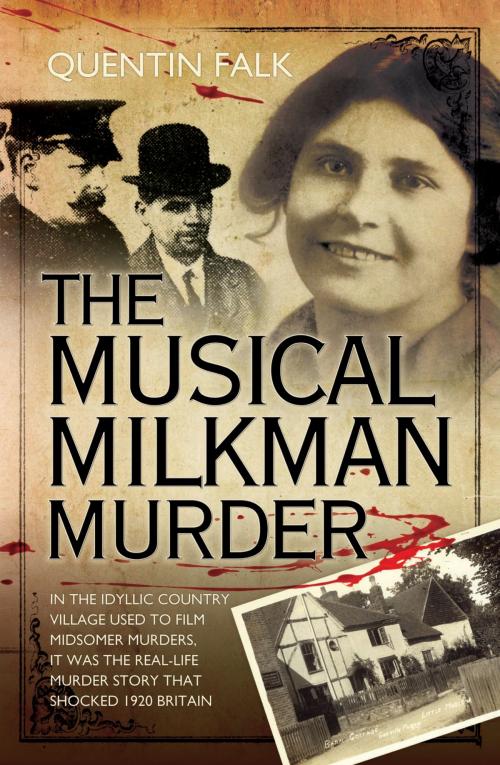The Musical Milkman Murder - In the idyllic country village used to film Midsomer Murders, it was the real-life murder story that shocked 1920 Britain
Nonfiction, Social & Cultural Studies, True Crime, Biography & Memoir| Author: | Quentin Falk | ISBN: | 9781782190806 |
| Publisher: | John Blake Publishing | Publication: | September 28, 2012 |
| Imprint: | John Blake | Language: | English |
| Author: | Quentin Falk |
| ISBN: | 9781782190806 |
| Publisher: | John Blake Publishing |
| Publication: | September 28, 2012 |
| Imprint: | John Blake |
| Language: | English |
On October 8, 1920 the body of a young woman named Kate Lilian Bailey, aged 22, was discovered. It transpired that her husband, George Arthur Bailey, had poisoned his seven-months pregnant wife with prussic acid, and with a whiff of the same chloroform he used to ease her final anguish, sedated his three-year-old daughter whom he placed in bed next to the corpse. Fourteen hours later, he fled the cottage, taking his child to relatives in Swindon before being arrested three days after the murder, at Reading Station with four kinds of poison in his pockets. Police also found a note suggesting that Bailey had intended to kill his little girl as well as himself and his wife. So was this simply the botched suicide pact of a devoted couple that had gone tragically out of control? All would be revealed at a sensational 1921 trial at Aylesbury Assizes; a shabby record of forgery, fraud, theft, false information and army desertion. Bailey - also known to the police as George Cox and Ronald Gilbert Treherne, or Tremayne, was also, it's said, a budding sex criminal and a fantasist of the first order. Although, curiously, he didn't plead insanity at his trial, the accused had a history of mental disorder including nervous breakdowns and several suicide attempts. At his trial - where women would sit on an English murder jury for the first time - Bailey denied all the charges. The prosecution argued that Bailey murdered his wife in order to be free to seduce innocent local girls, and a conviction was swiftly secured after the four day trial. Despite an appeal, Bailey was hanged 'three clear Sundays' after the jury returned with its verdict. George was a milkman and was known as the 'musical milkman' because he could be heard whistling while on his daily rounds.
On October 8, 1920 the body of a young woman named Kate Lilian Bailey, aged 22, was discovered. It transpired that her husband, George Arthur Bailey, had poisoned his seven-months pregnant wife with prussic acid, and with a whiff of the same chloroform he used to ease her final anguish, sedated his three-year-old daughter whom he placed in bed next to the corpse. Fourteen hours later, he fled the cottage, taking his child to relatives in Swindon before being arrested three days after the murder, at Reading Station with four kinds of poison in his pockets. Police also found a note suggesting that Bailey had intended to kill his little girl as well as himself and his wife. So was this simply the botched suicide pact of a devoted couple that had gone tragically out of control? All would be revealed at a sensational 1921 trial at Aylesbury Assizes; a shabby record of forgery, fraud, theft, false information and army desertion. Bailey - also known to the police as George Cox and Ronald Gilbert Treherne, or Tremayne, was also, it's said, a budding sex criminal and a fantasist of the first order. Although, curiously, he didn't plead insanity at his trial, the accused had a history of mental disorder including nervous breakdowns and several suicide attempts. At his trial - where women would sit on an English murder jury for the first time - Bailey denied all the charges. The prosecution argued that Bailey murdered his wife in order to be free to seduce innocent local girls, and a conviction was swiftly secured after the four day trial. Despite an appeal, Bailey was hanged 'three clear Sundays' after the jury returned with its verdict. George was a milkman and was known as the 'musical milkman' because he could be heard whistling while on his daily rounds.















